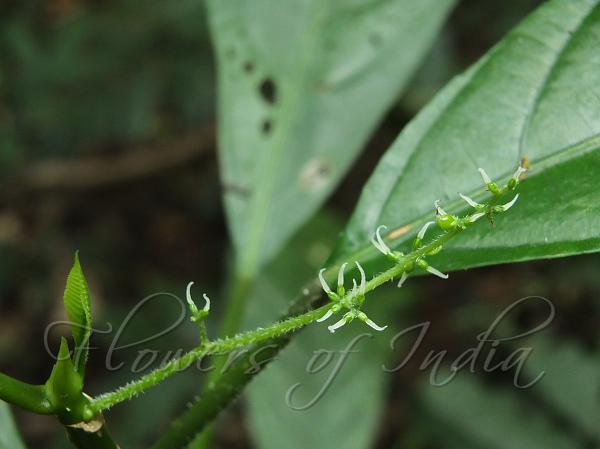|
| Stinging Tree |
|

|

| File size | 518102 |
| Original date | 12/21/14 11:42 AM |
| Resolution | 2048 x 1536 |
| Flash | Flash did not fire, auto |
| Focal length | 16.9mm |
| Exposure time | 1/60s |
| Aperture | 3.6 |
| Focus Distance | |
| Metering Mode | Spot |
| Camera make | FUJIFILM |
| Camera model | X-S1 |
| Sensor type | OneChipColorArea |
|
|
|
|
Photo: |
Botanical name: Dendrocnide sinuata Family: Urticaceae (Nettle family)
Synonyms: Urtica sinuata, Urtica pulus
Synonyms: Urtica sinuata, Urtica pulus
Stinging Tree is a large shrubs to small trees with
branchlets round, white, covered with soft stinging hairs. Upon contact
with skin the nettle causes a painful itch, hives, fever and chills,
skin depressions and clamminess which can recur over 10 days to six
months. Leaves are to 20 x 10 cm, elliptic to oblong-lanceshaped,
pointed at either ends, entire or rounded toothed, lateral nerves 9
pairs, leaf-stalk to 6 cm long. Flowers are borne in leaf-axils, in
stalked cymes, branches dichotomous, to 20 x 20 cm. Flowers are
monoecious or dioecious; male tepals 4 or 5, ovate, cup-shaped; female
tepals 4, ovate, free, velvet-hairy; stamens 4, free; pistillode
club-shaped; ovary 1-celled, ovules solitary; style 4 mm long,
puberulus, persistent. Achenes 6 mm, ovoid, white, hairless. Stinging
Tree is found in Peninsular India and Sri Lanka. Flowering:
November-December.
| Identification credit: Siddarth Machado | Photographed in Brahmagiri Range, Kodagu, Karnataka & Arunachal Pradesh. |
• Is this flower misidentified? If yes,